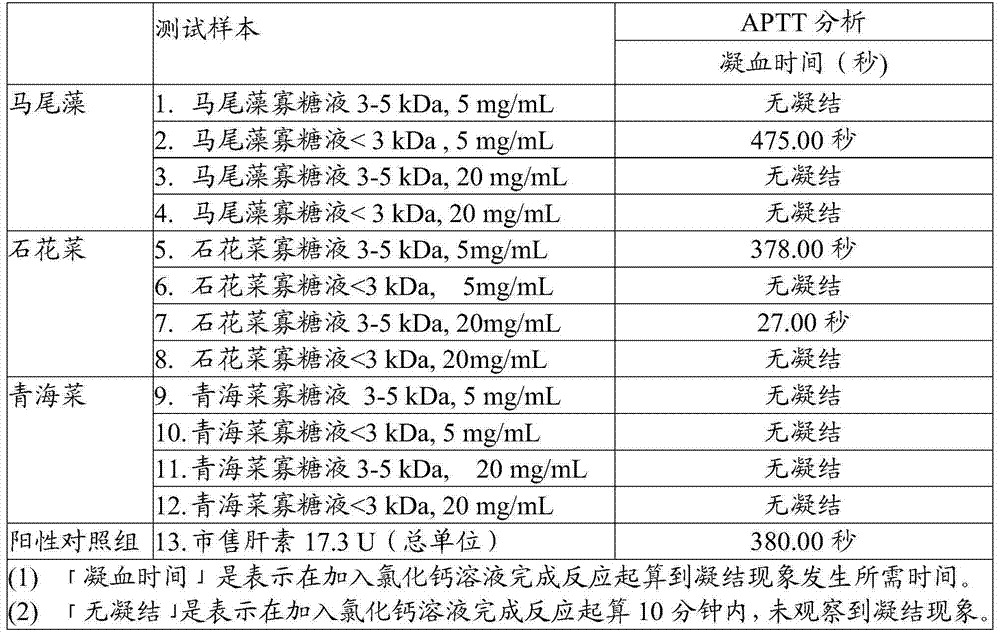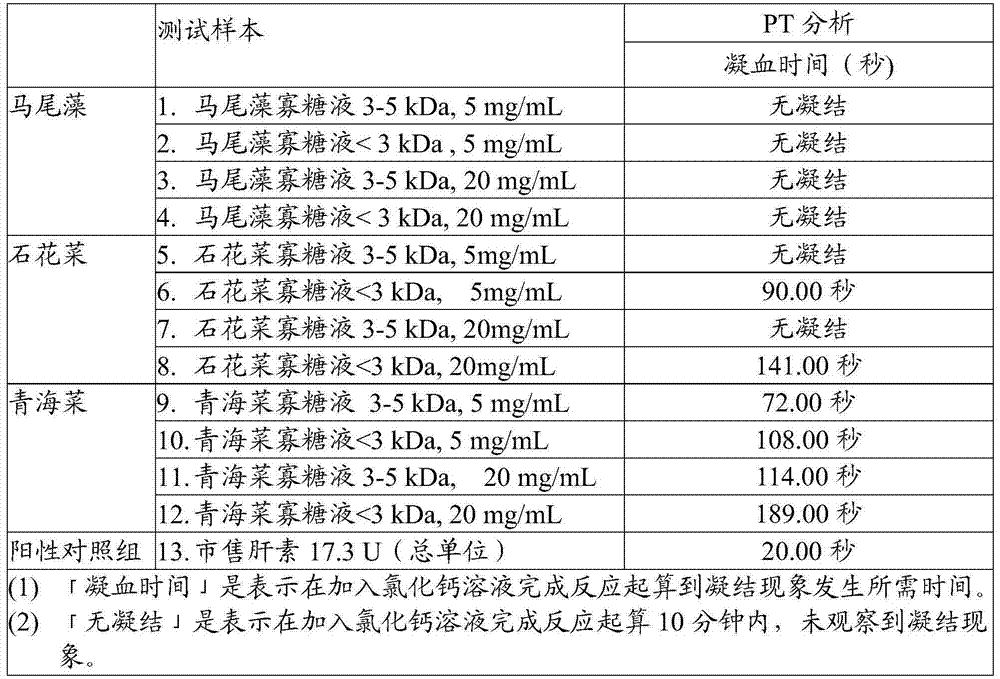Method for preparing alga oligosaccharide with anticoagulation activity
A technology of anticoagulant activity and seaweed oligosaccharide is applied in the field of preparing seaweed oligosaccharide with anticoagulant activity, and can solve the problems of high preparation cost, toxicity and the like
- Summary
- Abstract
- Description
- Claims
- Application Information
AI Technical Summary
Problems solved by technology
Method used
Image
Examples
Embodiment 1
[0059] Embodiment 1: the powder preparation and heat treatment of Sargassum, Geliflower, Qinghai Cai
[0060] In this experiment, Sargassum siliquosum, Gelidium amansii, and Monostromanitidum were respectively selected as the seaweed sources of Sargassum, Gelidium amansii, and Qinghai vegetable of the present invention, and the above-mentioned seaweed was heat-treated to extract polysaccharides , to obtain seaweed polysaccharide liquid from Sargassum, Gemweed, and Qinghai. In short, Sargassum, Gemweed, and Qinghai Cai were washed with running water, dried, and then ground to obtain powders of Sargassum, Gemweed, and Qinghai Cai respectively. Take 5g of Sargassum, Glycyrrhizae, and Qinghaicai powders and add them into 100mL of water respectively, and heat-extract them in a sterilized kettle at 121°C for 10 to 30 minutes to obtain seaweed polysaccharide liquids from Sargassum, Glycerus, and Qinghaicai, respectively.
Embodiment 2
[0061] Example 2: Inducing marine strains to produce saccharolytic enzymes with polysaccharides from Sargassum, Geliflower, and Qinghai Vegetables
[0062] In this experiment, the marine strains were respectively cultured in the bacterial culture solution containing polysaccharides from Sargassum, Geliflower, and Qinghai vegetables, and induced to produce saccharolytic enzymes to obtain crude enzyme solutions. In short, the seaweed polysaccharide solution from Sargassum, Glycyrrhizae, and Qinghai vegetable prepared in Example 1 was added to the marine bacterial culture medium (marinebroth, MB) at a concentration of 0.3% or 0.15% (v / v), Pseudomonas vesicularis (MA103) and Aeromonas salmonicida (MAEF108) were inoculated therein, and cultured at 25° C. for 24 hours, so that these marine strains were induced to produce glycolytic enzymes. Then, the culture is separated, the bacteria are removed, the supernatant containing the saccharolytic enzyme is obtained, and the crude enzyme ...
Embodiment 3
[0063] Embodiment 3: Make the seaweed polysaccharide from Sargassum, Geliflower, Qinghai dish pass through the hydrolysis of crude enzyme liquid and through separation process
[0064] In this experiment, the polysaccharide samples from Sargassum, Geliflower, and Qinghai vegetable were hydrolyzed with the corresponding crude enzyme solution to produce oligosaccharides, which were then separated to obtain hydrolyzed fractions of seaweed oligosaccharides in different molecular weight ranges. In short, in the seaweed polysaccharide solution from Sargassum, Geliflower, and Qinghai vegetable obtained in Example 1, the crude enzyme solution S, crude enzyme solution G, and crude enzyme solution M (crude enzyme solution M) obtained in Example 2 were added respectively. The volume percentage of the seaweed polysaccharide solution is about 10%, for example, add about 100ml crude enzyme solution to the seaweed polysaccharide solution of about 1,000ml), and react at room temperature for 1-...
PUM
 Login to View More
Login to View More Abstract
Description
Claims
Application Information
 Login to View More
Login to View More - R&D
- Intellectual Property
- Life Sciences
- Materials
- Tech Scout
- Unparalleled Data Quality
- Higher Quality Content
- 60% Fewer Hallucinations
Browse by: Latest US Patents, China's latest patents, Technical Efficacy Thesaurus, Application Domain, Technology Topic, Popular Technical Reports.
© 2025 PatSnap. All rights reserved.Legal|Privacy policy|Modern Slavery Act Transparency Statement|Sitemap|About US| Contact US: help@patsnap.com



